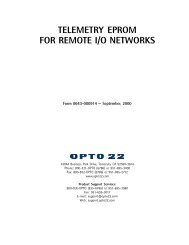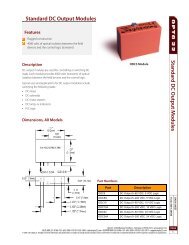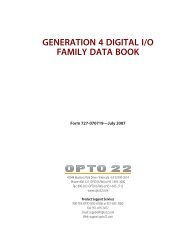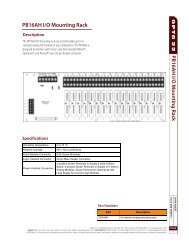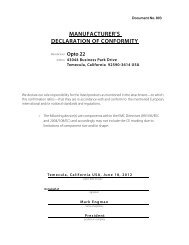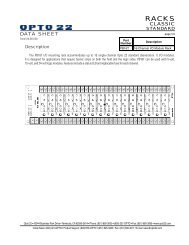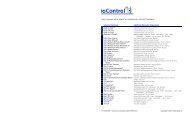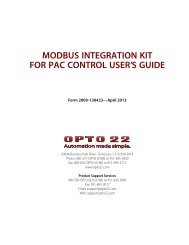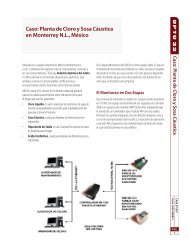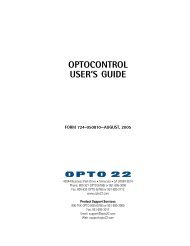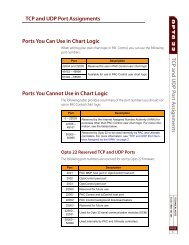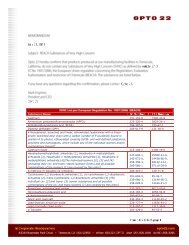1637 Case Study Georgia Aquarium - Opto 22
1637 Case Study Georgia Aquarium - Opto 22
1637 Case Study Georgia Aquarium - Opto 22
Create successful ePaper yourself
Turn your PDF publications into a flip-book with our unique Google optimized e-Paper software.
<strong>Case</strong> <strong>Study</strong>: <strong>Georgia</strong> <strong>Aquarium</strong><br />
is controlled. “The recovery system we designed required<br />
us to connect and monitor a number of I/O points,” says Hale.<br />
“Valve positioning, analog reclamation water levels and flowmeter<br />
readings all help determine when a sand filter can be automatically<br />
backwashed. When a VFD’s speed is ‘maxed out’ and filter<br />
performance has declined, it means the filter is ready for<br />
backwashing and the process is initiated.”<br />
“There are 56 filters just for the main tank,” adds Joe Poniatowski,<br />
the <strong>Georgia</strong> <strong>Aquarium</strong>’s Life Support Systems (LSS) Manager.<br />
“Monitoring and maintaining those alone would be a full-time<br />
job. Automating this process frees LSS from this responsibility.”<br />
“All fish water backwashes to a common reclamation system,”<br />
says Poniatowski. “We process and reuse almost all of this water,<br />
resulting in a close to zero percent salt water discharge. That’s<br />
something that’s pretty much unmatched by most other aquariums.”<br />
For the <strong>Georgia</strong> <strong>Aquarium</strong> to transport, process and reuse its water<br />
requires a host of water treatment equipment, hundreds of pumps,<br />
and over 61 miles of piping. Water is carried from the salt water mixing<br />
tanks to the exhibits and then back to the reclamation tanks. Along the<br />
way, the water is treated through the use of carbon filters (which strip<br />
out chlorine and fluoride) and protein skimmers, large tanks used to<br />
collect the water and remove any dissolved organic compounds (DOC)<br />
through a process called fractionation. Fractionation occurs when<br />
massive amounts of tiny air bubbles are injected into the water by<br />
a high pressure water pump and air valve. The rising air bubbles act<br />
as a lift, allowing DOC particles to attach to the bubbles and hitch a<br />
ride to the top of the protein skimmer, where they are captured in a<br />
collection cup and rinsed away via a jet spray.<br />
Water reclamation tanks<br />
Protein skimmers<br />
Dissolved organic compounds are collected at the tip of the<br />
protein skimmers and disposed of.<br />
PAGE<br />
2



